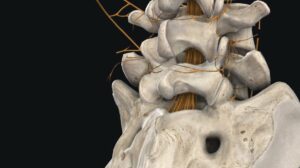NEW YORK (Reuters Health) – A dexamethasone intravitreal implant is more likely to reduce inflammation and improve vision than a sham treatment in patients with noninfectious uveitis, investigators report.
Allergan, Inc. – sponsor of this study – has developed a biodegradable, sustained-release implant (Ozurdex) that gradually delivers dexamethasone (DEX) to the posterior chamber of the eye.
“Ozurdex is the first biodegradable implant in the U.S. approved for treatment of noninfectious uveitis,” co-author Dr. Scott M. Whitcup, from Allergan Inc. in Irvine, California, told Reuters Health. It is composed of a mix of polylactic acid and polyglycolic acid polymers “that biodegrade in the eye to carbon dioxide and water.”
An advantage of the implant is that it delivers the medication directly to where it’s needed rather than systemically, thus improving the side effect profile. The drug is also more likely to reach its target since it doesn’t need to cross the blood-retinal barrier, the authors point out in their paper, published online January 10th by the Archives of Ophthalmology.
Dr. Whitcup added “Most striking, is that DEX implants not only controlled inflammation, but they brought about substantial improvements in vision.”
The implant is placed as an office-based procedure, using topical and subconjunctival anesthetics.
Trial subjects were 229 adult patients with noninfectious intermediate or posterior uveitis, with a vitreous haze score of at least +1.5 (on a scale of 0 to 4, with 0 = no inflammation and +4 = optic nerve head not visible). Best-corrected visual acuity ranged from 20/630 to 20/32.
The researchers, led by Dr. Careen Lowder at the Cleveland Clinic Cole Eye Institute in Ohio, randomly assigned patients to receive a 0.7-mg DEX implant (n = 77), a 0.35-mg DEX implant (n = 76), or a sham procedure using a needleless applicator (n = 76). Randomization was stratified by baseline vitreous haze (scores of +1.5 or +2 in one stratum and scores of +3 or +4 in the other).
At 8 weeks, 47% of patients with the 0.7-mg DEX implant had achieved a vitreous haze score of zero, as did 36% in the 0.35-mg DEX group and 12% in the sham group (p < 0.001 for both implants compared to sham). This benefit persisted throughout the 26-week study.
In addition, the research team says, “the DEX implant may alleviate vitreous haze regardless of the baseline severity of vitreous haze.”
The proportion of eyes with at least a 3-line improvement in best-corrected visual acuity was 2- to 6-fold greater with DEX implants than with sham treatment, the authors note. They also detected a significantly greater decline in central macular thickness with DEX treatment (p </= .004).
The safety profile was good as well, according to the report. Transient increases in intraocular pressure exceeding 25 mm Hg occurred in less than 10% of treated eyes; such increases resolved with topical medications or observation, with no glaucoma-related surgical interventions required.
However, the study was too short to assess the risk of cataracts.
By contrast, the investigators note, intravitreal injections of triamcinolone, while often effective for uveitis, must be repeated every 2 to 3 months, leading to cataract formation and steroid-induced glaucoma.
The decrease in complications with the DEX implant may simply reflect a better corticosteroid for this purpose, Dr. Whitcup suggested. More likely is the need to deliver high bolus doses with injections, while implants release lower levels of the drug for a longer period of time.
Last year, the Ozurdex dexamethasone implant was approved by the U.S. Food and Drug Administration, both for macular edema associated with retinal vein occlusion, and for noninfectious uveitis affecting the posterior segment of the eye.
Research to Prevent Blindness estimates that 2.3 million people in the U.S. have uveitis, and that it’s the third leading cause of blindness worldwide. Most cases occur in the anterior chamber, and most are thought to be noninfectious (probably related to autoimmune conditions), Dr. Whitcup noted.
However, severe vision impairment is associated primarily posterior uveitis – causing 10% to 15% of cases of blindness in the U.S.
Some of the trial results were presented at the Association for Research in Vision and Ophthalmology annual meeting in May of last year. The results were well received, Dr. Whitcup said.
“There are relatively few meds specifically approved for treating uveitis, and relatively few randomized controlled trials in this patient population, so when other uveitis specialists saw our data they were very enthusiastic.”
He believes that the DEX implant is “an excellent treatment option” when used as indicated by the FDA. However, “patients need to be monitored regularly, since some may get their uveitis under control with one treatment, but it’s not uncommon for these patients to need longer therapy.”
Reference:
Dexamethasone Intravitreal Implant for Noninfectious Intermediate or Posterior Uveitis
Arch Ophthalmol 2011.




